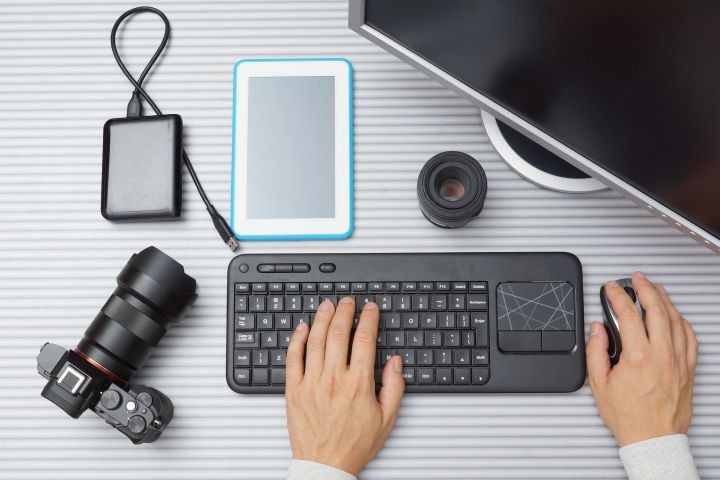
Lightroom is designed to be fast, and while the user interface is pretty quick, there’s still another way to make those edits faster: the keyboard. But there’s a problem. Adobe’s list of Lightroom shortcuts is somewhere in the ballpark of 300 combinations – pretty impressive for a laptop’s 80-some keys.
Unless you use a keyboard skin or you have a photographic memory, you’re probably not going to be whizzing through your edits using every memorized hot key anytime soon. Thankfully, several of the most helpful keyboard shortcuts aren’t too difficult to remember. After you’ve mastered the basics of Lightroom, memorize these 18 most-often used Lightroom shortcuts — and note that we’ve provided an easy way to remember them.
Lightroom shortcuts for organizing and flagging photos
Many photographers who start with digital shoot many more photos then they actually need (I’m so guilty of this that my first newsroom editor nicknamed me Pepper). Keyboard shortcuts make quick work of picking out the best shots. Most users know that you can use the arrow keys to navigate to the next image and the backspace or delete key to remove photos, but there are a number of other commands that are (almost) as easy to remember.
| Action | Windows Command | MacOS Command | Memory Trick |
| Switch to the compare View, to see two photos side-by-side | C | C | C is for for Compare |
| Zoom | Z | Z | Z is for Zoom |
| Add a Flag | P | P | P is for Pick |
| Unflag | U | U | U is for Unflag |
| Select all flagged photos | Control + Alt + A | Command + Option + A | Control or Command A works in a number of apps to select everything — just add an Alt or Option to select only the flagged photos |
| Reject photo | X | X | Cross out that photo |
| Delete all rejects | Control + Backspace | Command + Delete | Just add control or command to the delete keyboard shortcut to control all those rejects |
| Add a star rating | Number keys 1-5 | Number keys 1-5 | This one really is as easy as 1-2-3 |
| Add a color label | 6 – Red
7 – Yellow 8 – Green 9 – Blue |
6 – Red
7 – Yellow 8 – Green 9- Blue |
Color labels are used in the order of the rainbow: Remember ROY G. BIV? Just skip the vowels. |
| Add a keyword | Control + K | Command + K | K is for Keyword |
One more handy trick — Hold down shift to move to the next photo after marking, this trick works for flagging, star ratings, color labels and rejecting a photo.
Lightroom shortcuts for editing photos
Keyboard shortcuts can make quick work of sorting through photos, and while you likely can’t do all of your edits with keyboard commands, they still can help speed up the process. Keyboard shortcuts are handy for selecting and even adjusting tools.
| Action | Windows Command | MacOS Command | Memory Trick |
| Create a virtual copy | Control + ‘ | Command + ‘ | This one is tricky — but think of using a single quote mark like you’re ‘quoting’ from the original photo |
| Edit in Photoshop | Control + E | Command + E | E is for Edit (but don’t forget the Control or Command to swap programs) |
| Sync settings | Control + Shift + S | Command + Shift + S | The S is easy — just add control/command and shift or you’ll be swapping to the proof view |
| White balance eye dropper | W | W | W is for White balance |
| Adjustment Brush | K | K | oK, Adobe, why does K stand for adjustment brush? |
| Brush Size | [ – Smaller
] – Larger |
[ – Smaller
] – Larger |
Brackets double as arrow keys for the brush tool |
| Brush feather | Shift + [
Shift + ] |
Shift + [
Shift + ] |
Add shift to brush size shortcuts to control the brush feather |
| Export image | Control + Shift + E | Command + Shift + E | Add a shift to the edit in Photoshop shortcut and now you’re exporting |
Tip: On touchpad laptops, you can swipe two fingers up or down to adjust the brush size in Lightroom.
Not bad for even the memory challenged, right? Keyboard shortcuts are a simple way to cut back on editing time without purchasing an additional set of physical controls — you can even sort, flag and tag entire catalogs with just a lift of the finger. If you’re feeling brave, you can find the entire set of Lightroom hotkeys here.



